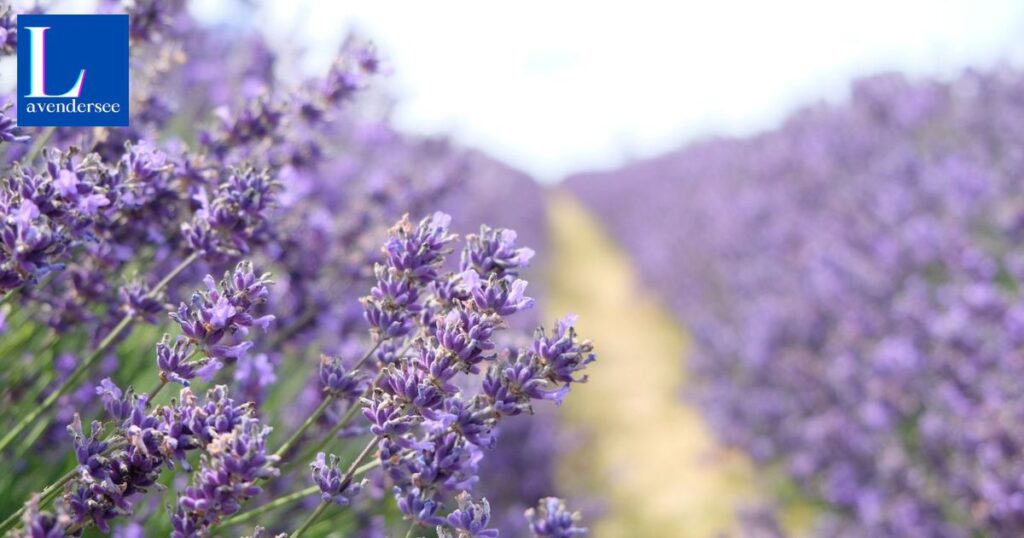A dead lavender plant appears brown and brittle, with dried, lifeless stems devoid of the vibrant green color characteristic of a healthy plant.
With a melancholic aura, the lifeless remnants of a neglected garden reveal a haunting sight what does a dead lavender plant look like? It stands as a stark testament to the ephemeral beauty that succumbs to time’s indifference.
In the realm of botanical sorrow, a dead lavender plant embodies a wilted ballet of faded petals, embodying a spectral beauty that echoes the fleeting vibrancy now replaced by nature’s elegy in muted hues.
Can Dead Lavender Come Back?
The prospect of a dead lavender plant reviving is often challenging. Once lavender has withered due to poor care or harsh conditions, its chances of regaining vitality are minimal. However, there are instances where diligent care, such as proper watering, pruning, and providing optimal sunlight, might encourage a faint resurgence.
While some gardeners have reported success in rejuvenating seemingly lifeless lavender through attentive rehabilitation, it’s crucial to recognize that not all plants can be revived. Patience is key, as new growth may take time to appear.
Assessing the extent of damage, implementing corrective measures, and crossing fingers for signs of life are all part of the delicate process when attempting to bring a seemingly dead lavender plant back to health.
What Does Dying Lavender Look Like?

When lavender begins to fade, the vibrant green leaves lose their luster, dead turning dull and dry. The once aromatic blossoms start wilting, and the entire plant appears lackluster, signaling the onset of its decline.
A dying lavender plant displays signs of distress through yellowing leaves and dead a noticeable droop in its stems. The typically fragrant flowers lose their vitality, and the overall appearance shifts from a lively green to a somber, struggling state, conveying the plant’s plea for attention.
As lavender faces its decline, the leaves lose their elasticity, dead becoming brittle and brown. The usually perky lavender spikes lose their erect stance, drooping under the weight of neglect. It’s a visual elegy of the plant’s vitality, transforming into a withered silhouette of its former aromatic glory.
What Does Lavender Look Like When It Comes Back?
As spring breathes life into the garden, the resurgence of lavender is a sight to behold. Tender green shoots emerge from the soil, crowned with iconic slender leaves that exude a refreshing fragrance. The once dormant lavender transforms into a vibrant symphony of purple blooms, swaying gracefully in the gentle breeze.
With the arrival of warmth, the rejuvenated lavender plant showcases its resilience. Tiny buds evolve into clusters of aromatic flowers, painting the landscape with hues ranging from pale lavender to deep violet. The plant’s distinctive fragrance intensifies, inviting bees and butterflies to partake in the renewed dance of nature, creating a delightful sensory experience.
What To Do When Lavender Died?
| Action | Description |
| Assessment | Examine the lavender plant thoroughly to confirm its demise. Look for signs such as dry, brittle stems and lack of new growth. |
| Pruning | Trim away the dead and brown parts of the lavender plant using clean pruning shears. This encourages new growth and prevents the spread of diseases. |
| Soil Inspection | Assess the soil’s drainage and pH levels. Lavender thrives in well-draining, slightly alkaline soil. Amend the soil if necessary to create an optimal environment. |
| Replanting | If the lavender plant is beyond revival, consider replanting with a new specimen. Choose a sunny location with well-draining soil for the new planting. |
| Watering Adjustments | Adjust the watering schedule |
My Lavender Plants Died.

Devastatingly, my lavender plants succumbed to an unknown ailment. The once vibrant and fragrant foliage now hangs limp, a testament to the unsuccessful battle against an unseen adversary. Despite my efforts, the garden is left with a void, devoid of the soothing aroma and delicate purple blooms that once graced it.
Heartbroken over the demise of my lavender plants, I reflect on the journey from planting to wilting. Despite consistent care and attention, their demise remains a mystery, leaving behind a stark reminder of the transient nature of life in the garden. The absence of the lavender’s gentle sway in the breeze now leaves an emptiness that even the most resilient blooms struggle to fill.
When, Why And How To Re-Plant Lavender?
When to Re-Plant Lavender
- Best done in early spring or fall.
- Avoid periods of active flowering.
- Optimal timing during dormancy for root establishment.
Why Re-Plant Lavender
- Necessary when the plant outgrows its space.
- Address poor growth or signs of disease.
- Rejuvenate older, woody plants for better productivity.
- Improve soil quality, drainage, and sunlight exposure.
How to Re-Plant Lavender
- Choose a well-draining, sunny location.
- Dig a hole slightly larger than the root ball.
- Gently remove lavender, preserving roots.
- Place in the new hole, backfill, and water thoroughly.
- Mulch to retain moisture and suppress weeds.
Here Are A Few Things To Consider As You Plan Out Your Planting
When planning your planting, take note of your local climate and soil conditions. Different plants thrive in various environments, so understanding these factors is crucial for a successful garden. Consider the sunlight exposure in your chosen area, as some plants require full sun, while others prefer shade. By tailoring your choices to your specific conditions, you set the stage for a thriving and resilient garden.
Watering is a key element in plant care. Be mindful of the water needs of your chosen plants and create a watering schedule that suits them. Some plants prefer consistently moist soil, while others thrive in drier conditions.
Additionally, consider the spacing between plants to allow for proper air circulation and prevent overcrowding. By paying attention to these details, you enhance the overall health and vitality of your garden.
Pull Plants And Prepare The Soil

Before diving into the rewarding task of pulling plants, assess your garden’s needs. Identify the plants that have completed their lifecycle or appear unhealthy.
Armed with gloves and a hand trowel, gently uproot these plants, clearing the way for new growth. Be mindful of the roots, ensuring a clean extraction without disrupting neighboring flora.
After pulling out the spent plants, shift your focus to soil rejuvenation. Loosen the soil with a rake or hoe, breaking up compacted areas. Incorporate organic matter like compost to enhance fertility and structure. This not only provides essential nutrients but also improves water retention. With a well-prepared soil canvas, your garden is now poised for a vibrant and flourishing future.
Plan Your Next Steps
Assessment
Begin by evaluating your current situation, whether it’s a project, a goal, or a decision. Understand the key aspects and challenges you are facing.
Define Objectives
Clearly outline your goals or what you want to achieve. Establish specific, measurable, achievable, relevant, and time-bound (SMART) objectives to guide your next steps.
Prioritize Tasks
Break down your objectives into smaller, manageable tasks. Prioritize these tasks based on urgency and importance, ensuring you tackle high-priority items first.
Create a Timeline
Develop a realistic timeline for your activities. Allocate time to each task, considering deadlines and dependencies to stay organized and on track.
Resource Allocation
Identify the resources, be it time, finances, or expertise, required to execute your plan. Ensure you have the necessary support and tools to succeed.
Adjustment and Flexibility
Remain adaptable. Plans may need adjustments along the way. Be open to change and ready to revise your strategy based on feedback and evolving circumstances.
Execution
Take actionable steps towards your goals. Implement your plan systematically, addressing each task according to your outlined timeline.
Monitor Progress
Regularly assess your progress. This allows you to celebrate achievements, identify challenges, and make necessary adjustments to stay aligned with your objectives.
Learn and Iterate
Embrace the learning process. Analyze both successes and setbacks to continuously refine your approach. Iteration is key to ongoing improvement.
Celebrate Achievements
Acknowledge and celebrate milestones. Recognizing your accomplishments motivates
Ready To Prepare For Your Spring Planting?

Gear up for your spring planting adventure! Begin by clearing your garden beds of debris and giving the soil a nutrient boost with compost. Take stock of your gardening tools, ensuring they are clean and ready for action. Now’s the perfect time to plan your layout and decide on the vibrant array of flowers or bountiful vegetables that will grace your garden this season.
Embrace the anticipation of a blooming spring by starting your seeds indoors. Create a cozy setup with containers, soil, and proper lighting. As your seedlings sprout, nurture them with care, so they’re robust and ready for transplant when the warmer days arrive.
With thoughtful preparation, your spring garden will soon burst into a kaleidoscope of colors and flavors, a testament to the joy of a well-prepared planting season.
Frequently Ask question
Why Does My Lavender Plant Look Dead?
A seemingly lifeless lavender plant may result from overwatering, leading to root rot, or insufficient sunlight. Ensure well-draining soil and provide ample sunlight to revive its aromatic charm.
How Do You Revive Old Lavender?
To revive old lavender, trim back leggy stems, provide well-draining soil, and ensure ample sunlight. Regular pruning and a balanced fertilizer can breathe new life into the aromatic charm of your once-vibrant lavender plants.
Will Woody Lavender Regrow?
Woody lavender can regrow if pruned correctly. Trim back one-third of the plant in spring to encourage new growth, ensuring a healthier and more vibrant lavender display.
Can I Cut Lavender Back To The Ground?
Yes, you can cut lavender back to the ground in early spring to encourage fresh growth. This rejuvenating pruning method helps maintain the plant’s shape and stimulates new, fragrant foliage.
What Does Lavender Root Rot Look Like?
Lavender root rot manifests as wilting, yellowing leaves and stunted growth. The roots, infected by soil-borne pathogens, exhibit a dark, mushy appearance, signaling the need for immediate attention to prevent further damage.
Conclusion
In conclusion, a dead lavender plant presents a visual elegy in the garden, with its once-vibrant hues muted into a somber palette of brown and brittle stems. This poignant sight serves as a reminder of the importance of attentive care and the delicate balance between nature’s beauty and the responsibilities we bear as stewards of our green spaces.
In the final analysis, the demise of a lavender plant echoes the broader lesson that neglect can erase the vivacity of even the most resilient flora. As gardeners, recognizing the signs of a fading lavender and intervening with timely care becomes crucial in preserving the charm and vitality that these aromatic plants bring to our outdoor sanctuaries.











